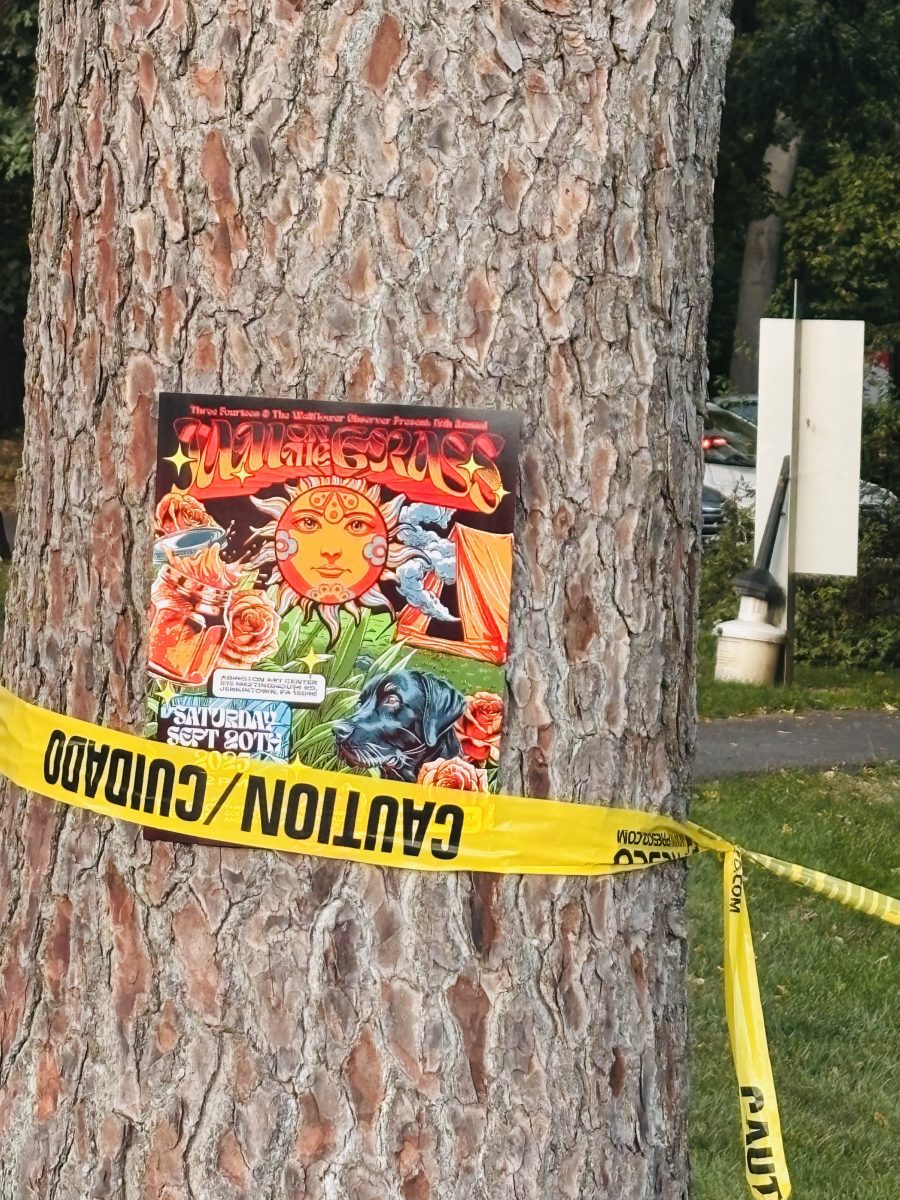Our Puram
Reviewed by: Asher Wolf
When I learned that Our Puram is thematically centered on an infamous religious cult-cum-hippie commune from the ‘80s, many of its puzzling qualities suddenly made sense: the obsessive, enigmatic lyrics; the pungent eeriness despite the lack of a single minor chord; the repeated devolution of every structured song to a shifty, nebulous trance. Each track weaves its own engrossing atmosphere, but the emotional character of the record as a whole is defined by its deeply unsettling ambivalence.
Even the genre of this concept album is two-fold. Danny Seim of Menomena first teamed up with The National’s drummer, Bryan Devendorf, in 2015, bringing aboard A-list horn player Dave Nelson, who is also known for his work with the royalty of indie rock (Sufjan Stevens and St. Vincent & David Byrne). The gravity of these aforementioned namedrops is enough to level any alt enthusiast, but curiously, this bona fide indie supergroup makes music better classified as experimental electronica. Since their 2015 debut album, Gunerrra, Pfarmers has walked the line between the two idioms, occasionally taking more committed detours to one side or the other of the electronic divide.
While indie rock doesn’t dominate Pfarmers’ sound, the common stylistic background of the three musicians lends cohesiveness and aesthetic chemistry to the group. Throughout Our Puram, they often reconcile rock-based songwriting and dance music inclinations by rendering their indie riffs and melodies with a knotty electronic texture dense enough to pummel the listener. The sonic palette is consistent on the whole without being overly uniform: snares and cymbals burst in violent clusters as vibey sound effects broil and seethe in the background. At its best, the fusion sounds like Flying Lotus remixes of National tunes, with throbbing club beats swapped out for FlyLo’s swaggering hip-hop foundation. The first track, “97741”, opens with an EDM build up, a steady increase of intensity amplified by the layering of ambient synth lines atop a rollicking drum pattern. Without warning, the thumping cuts out to leave space for a mantra-like vocal line over a tonic drone – a psychedelic twist reminiscent of Sgt. Pepper’s. The club beat drops back in just as suddenly, and the two modes converge to an organic middle ground by the end of the track.
The next piece, “Tour Guide”, follows an opposite progression. Ethereal, double-tracked vocals drift over a tumultuous ocean of sound before finally giving up and drowning in the mix. Instead of progressively developing a framework, the track starts in a place of relative structure and proceeds to dismantle it, leaving a minute and a half of dizzying, atonal atmosphere. Nelson’s trumpet cuts through with a string of guttural moans, making the initially upbeat number feel like free jazz on a bad trip. “The Commune” and Our Puram’s catchiest song, “Red Vermin”, undergo a similar pattern of structural decay. This contrast between structure and entropy conjures the formal tension that lends an ominous mood to each major key, common time composition.
For an alt-rocker delving into electronic territory, the comparison to Radiohead is near inevitable. Our Puram follows Radiohead’s archetype with regard to its vaguely sinister demeanor, but it manifests this spectrum of moods with a more atmospheric focus and a particularly dense texture. For better or for worse, there is hardly a moment of empty space in the entire record. Every song has a distinct identity, but they grow slightly redundant as the record washes by – a stream of pulsating, driven soundscapes. Nonetheless, the consistent mood-centric maximalism helps Our Puram succeed as a concept album, functioning effectively as a singular work of art. Though at times overwhelming, the record flaunts a compelling, well-articulated aesthetic and is well worth a listen.
Rating: Listenable








